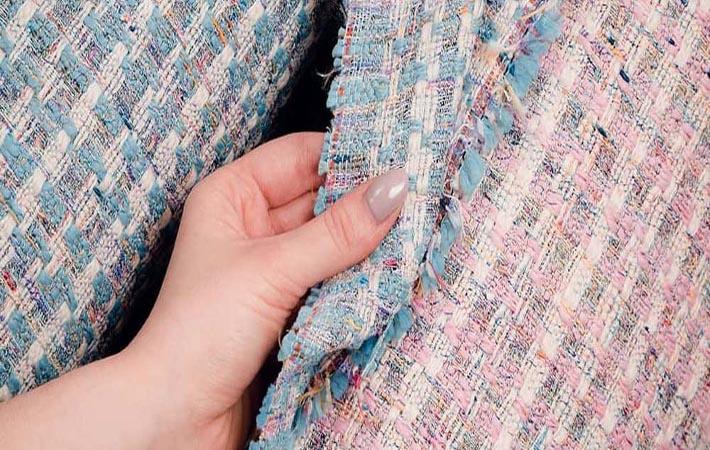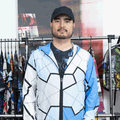Interviews
News Flash
TUKA3D claims introducing 'feel factor value' to fabrics
24 Jul '20
3 min read

Pic: Tukatech
Los Angeles-based Tukatech recently claimed to have introduced the ‘feel factor value’ to fabrics based on a mathematical calculation using bend and surface friction values in all warp, weft and shear directions. The feature helps in 3D product design as customers can quickly relate fabric feel without having to wait for a physical sample that can delay the development process.
A ‘fabric feel factor’ is a number that someone may be able to learn and associate in their mind when imagining what the fabric will feel like. The relational value comparison is based on many fabrics familiar to users.
This is like understanding a weather report where, for example, the temperature is 56 degrees Fahrenheit but ‘feels like’ 65. This ‘feels like’ conveys that one might feel warmer than the current temperature would indicate. This may be due to various reasons in the environment for that day including wind velocity and humidity.
Simply telling the relative humidity is a certain value or that the wind is at a certain velocity does not instantly convey the feel factor of the temperature. However, if it is told that the temperature feels like 65 degrees it instantly conveys what to expect, the company said explaining the concept in a press release.
A similar analogy has been applied to fabrics. For example, most apparel people know from experience how soft a fine silk scarf feels and know that raw denim or burlap is rough. A number can be assigned to fabrics that will convey to the mind the feel factor of the fabric. If the softest fabric was a 10 on a scale of 1 to 10 and the roughest was a 1, then other fabrics fall in between.
This determination from most used fabrics now can be classified with reference number for each and a feel factor for new fabric will help the design community to ‘digitally feel’ the fabric while they can see the drape and movement of fabric in TUKA3D. These values can then be tabulated and the mean for each fabric taken and assigned to that fabric.
“We wanted to give designers the 'feel factor' to help speed up the product development process in digital format, as well as give consumers the ability to digitally feel the fabric before making their purchase," explains Ram Sareen, founder-chief executive officer of the company, which was founded in 1995 to have pattern makers create patterns digitally on the computer.
A ‘fabric feel factor’ is a number that someone may be able to learn and associate in their mind when imagining what the fabric will feel like. The relational value comparison is based on many fabrics familiar to users.
This is like understanding a weather report where, for example, the temperature is 56 degrees Fahrenheit but ‘feels like’ 65. This ‘feels like’ conveys that one might feel warmer than the current temperature would indicate. This may be due to various reasons in the environment for that day including wind velocity and humidity.
Simply telling the relative humidity is a certain value or that the wind is at a certain velocity does not instantly convey the feel factor of the temperature. However, if it is told that the temperature feels like 65 degrees it instantly conveys what to expect, the company said explaining the concept in a press release.
A similar analogy has been applied to fabrics. For example, most apparel people know from experience how soft a fine silk scarf feels and know that raw denim or burlap is rough. A number can be assigned to fabrics that will convey to the mind the feel factor of the fabric. If the softest fabric was a 10 on a scale of 1 to 10 and the roughest was a 1, then other fabrics fall in between.
This determination from most used fabrics now can be classified with reference number for each and a feel factor for new fabric will help the design community to ‘digitally feel’ the fabric while they can see the drape and movement of fabric in TUKA3D. These values can then be tabulated and the mean for each fabric taken and assigned to that fabric.
“We wanted to give designers the 'feel factor' to help speed up the product development process in digital format, as well as give consumers the ability to digitally feel the fabric before making their purchase," explains Ram Sareen, founder-chief executive officer of the company, which was founded in 1995 to have pattern makers create patterns digitally on the computer.
Fibre2Fashion News Desk (DS)
Popular News
Leave your Comments
Editor’s Pick
Therese Premler-Andersson
Textile Machinery Association of Sweden (TMAS)
Christian Guinet
French Textile Equipment Manufacturers’ Association (UCMTF)
Andrea pompilio
Label - Andrea pompilio
































-Ltd..jpg?tr=w-120,h-60,c-at_max,cm-pad_resize,bg-ffffff)





.jpg?tr=w-120,h-60,c-at_max,cm-pad_resize,bg-ffffff)
.jpg?tr=w-120,h-60,c-at_max,cm-pad_resize,bg-ffffff)






